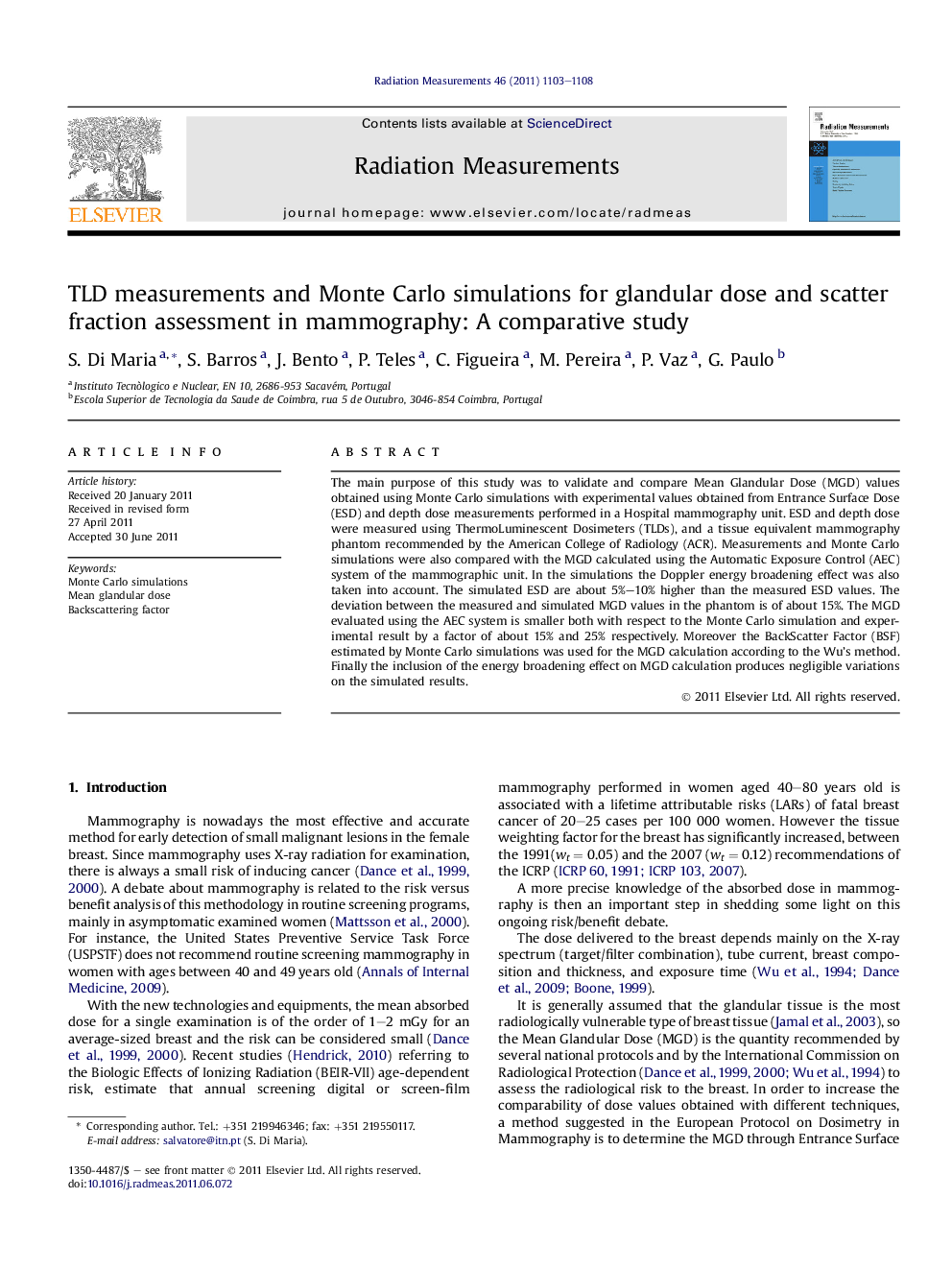| Article ID | Journal | Published Year | Pages | File Type |
|---|---|---|---|---|
| 1880909 | Radiation Measurements | 2011 | 6 Pages |
The main purpose of this study was to validate and compare Mean Glandular Dose (MGD) values obtained using Monte Carlo simulations with experimental values obtained from Entrance Surface Dose (ESD) and depth dose measurements performed in a Hospital mammography unit. ESD and depth dose were measured using ThermoLuminescent Dosimeters (TLDs), and a tissue equivalent mammography phantom recommended by the American College of Radiology (ACR). Measurements and Monte Carlo simulations were also compared with the MGD calculated using the Automatic Exposure Control (AEC) system of the mammographic unit. In the simulations the Doppler energy broadening effect was also taken into account. The simulated ESD are about 5%–10% higher than the measured ESD values. The deviation between the measured and simulated MGD values in the phantom is of about 15%. The MGD evaluated using the AEC system is smaller both with respect to the Monte Carlo simulation and experimental result by a factor of about 15% and 25% respectively. Moreover the BackScatter Factor (BSF) estimated by Monte Carlo simulations was used for the MGD calculation according to the Wu’s method. Finally the inclusion of the energy broadening effect on MGD calculation produces negligible variations on the simulated results.
► Depth dose measurements in breast phantom with TLD and an X-ray mammography system. ► Entrance surface dose measurements with TLD. ► Monte Carlo assessment of mean glandular dose and comparison with experimental data. ► Dose variation inside the breast from 12% to 230% of the mean glandular dose. ► Monte Carlo estimation of backscatter factor and dose scatter fraction.
